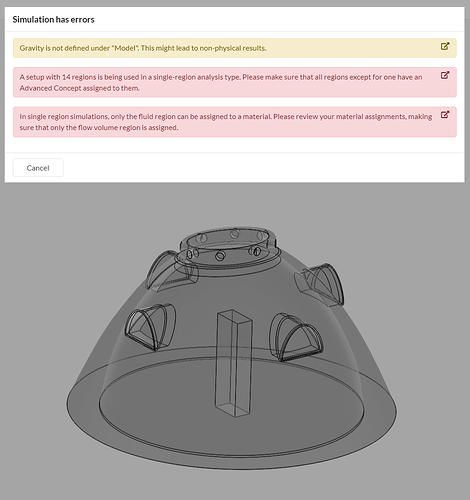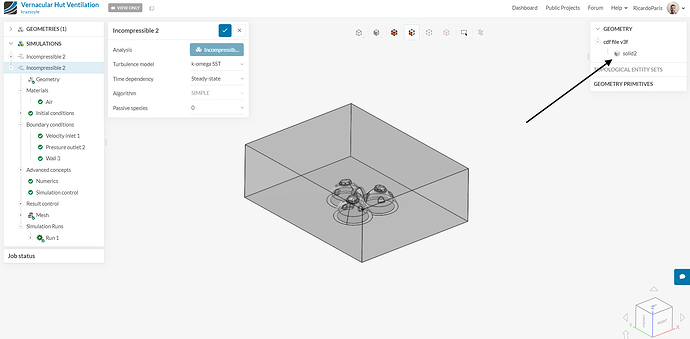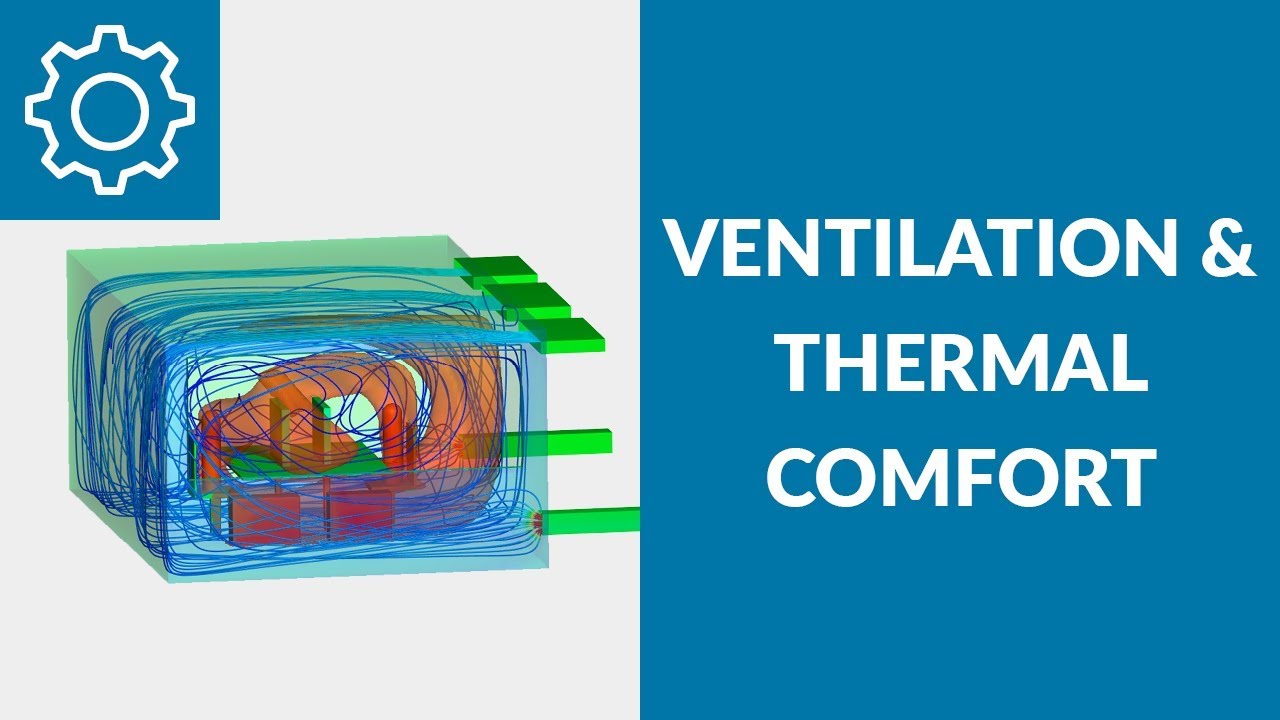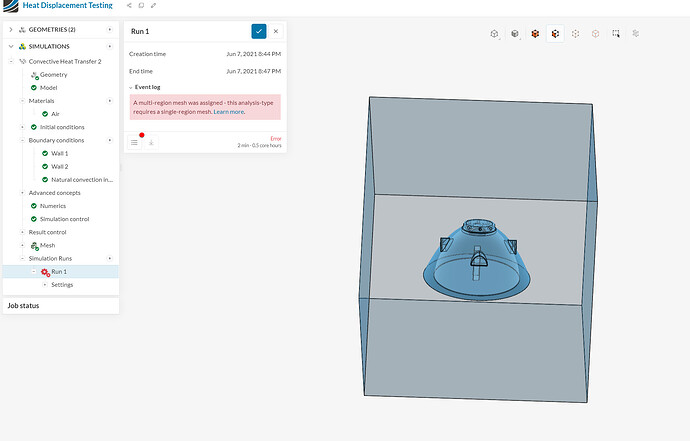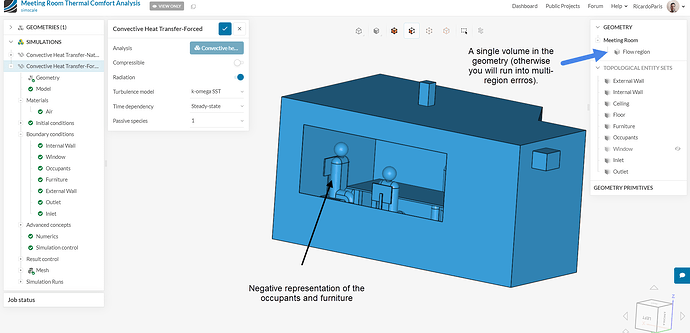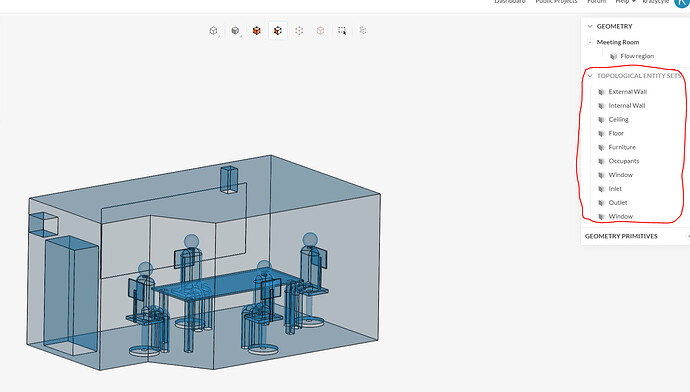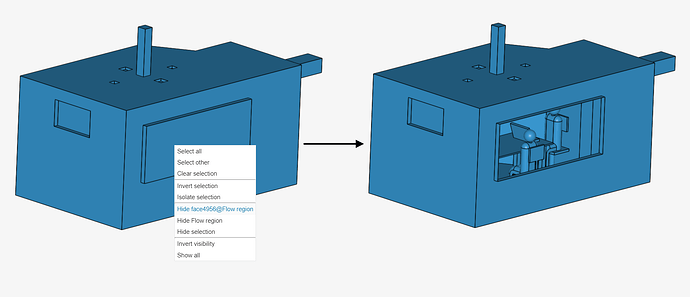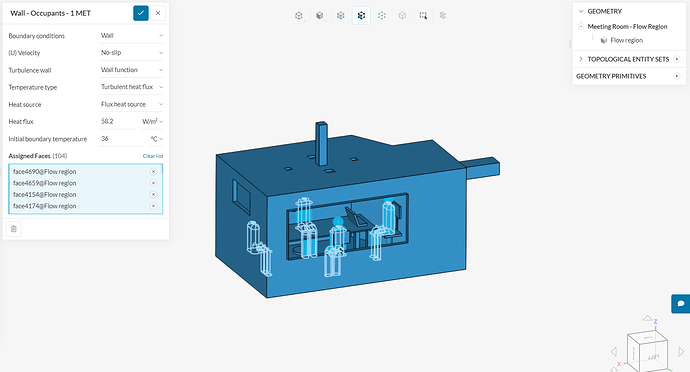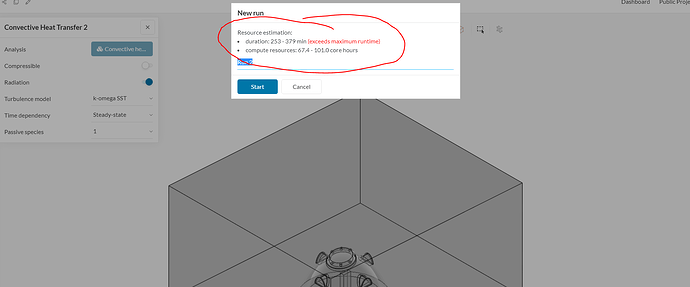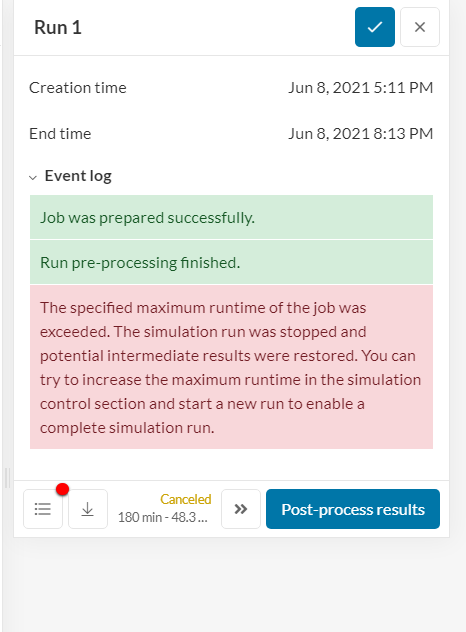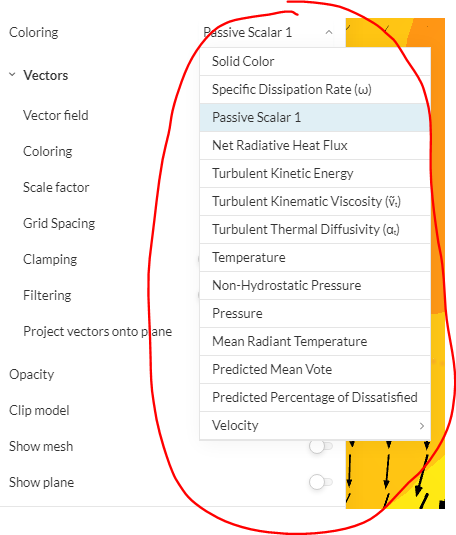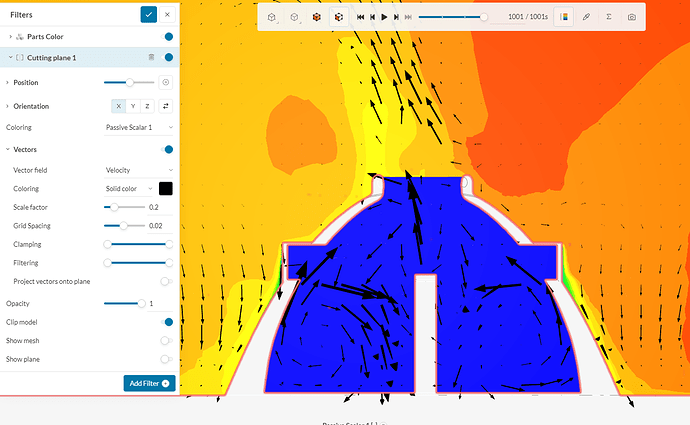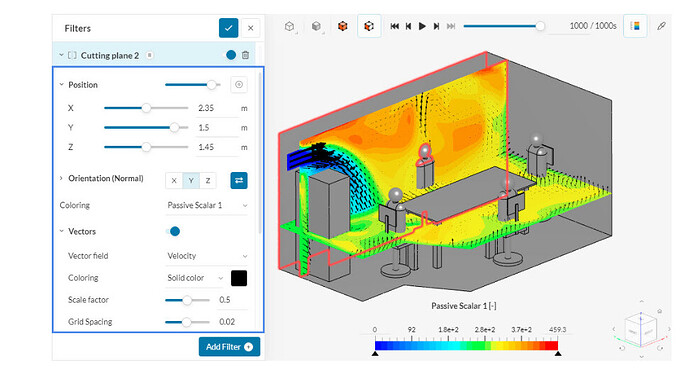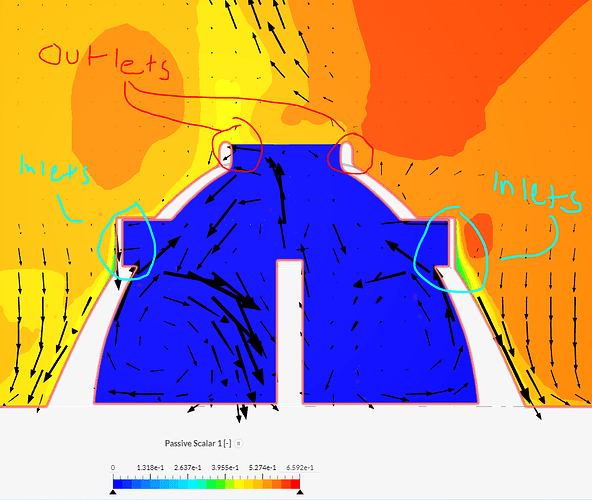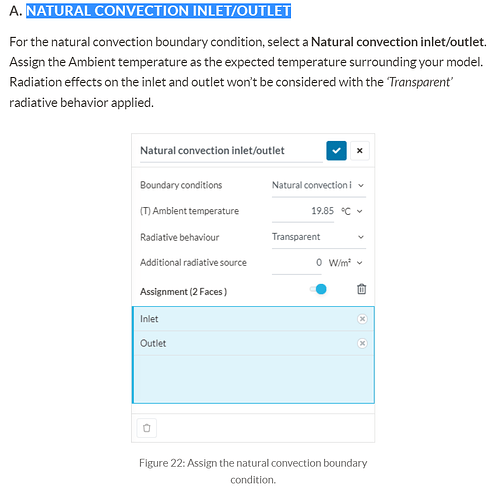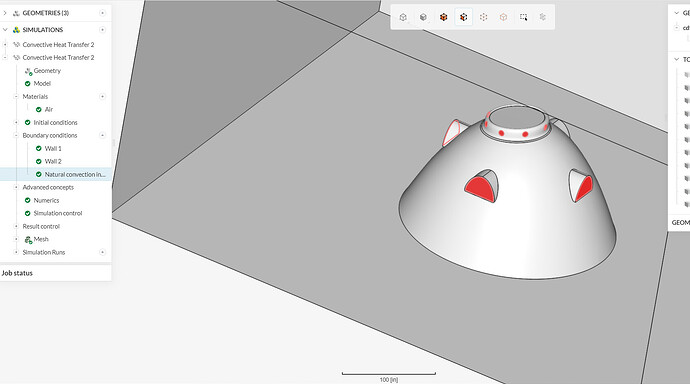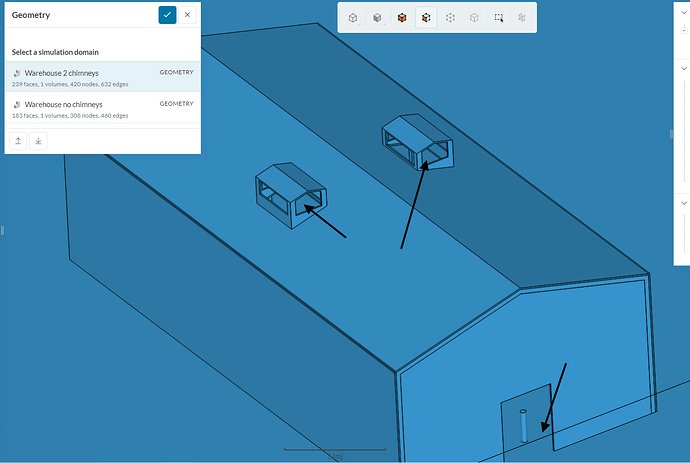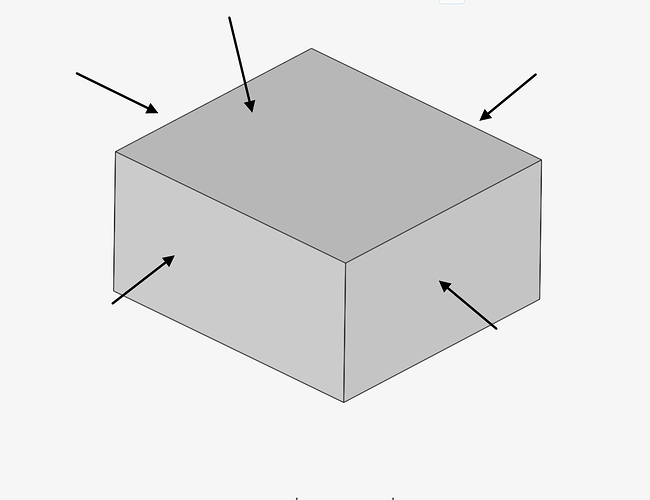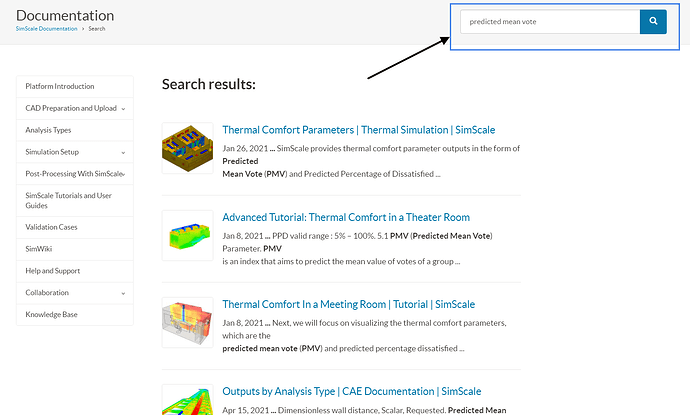Hey there, and thanks for using our forum!
For a Convective Heat Transfer simulation, you need to use only the fluid volume as a part. Currently, you are trying to simulate using your solid boundary parts.
This is easily fixed by performing a flow volume extraction, as explained in the following article:
Am I trying to simulate an External or Internal Flow Volume? I am also confused by your wording “you need to use only the fluid volume as a part” and “you are trying to simulate using your solid boundary parts.” Could you explain that a bit further?
Hello,
The idea is to do exactly what you did for the incompressible analysis (from this thread): the only solid volume that should be in your CAD model is the flow region:
The solid walls of the huts are not necessary and should be deleted.
Cheers
I understand that, but this time I have a modeled person in my hut and I want to test the internal heat dissipation from them and how it ventilates out of the hut. From the tutorial I am watching, there are multiple solids that are used to set different properties to. If I do what I did last time, I will only have one solid and cannot set different properties to differing solids.
I’d recommend that you check this tutorial for the usual approach (again, this tutorial uses a single volume, which is the correct approach to model people): Thermal Comfort In a Meeting Room | Tutorial | SimScale
Sections 2 to 2.3 are of particular interest.
I followed the tutorial as best as I could, but the simulation ended up not working. I have a feeling I set up my external flow region incorrectly. What do you think?
Hello,
The rule number 1 is: under normal circumstances, a single volume is allowed for the simulation. Failing to satisfy this requirement will result in a multi-region error. From the tutorial that I linked:
For your geometry, the hut is currently 100% closed and there are no openings. With this configuration, you will only be able to simulate the air outside OR the air inside the hut, but not both. In short, if you want to analyze the air both inside and outside, you will need:
- To open some of these windows/doors/ceilings
- Remove the solid parts from the flow region via boolean/subtract operations
- Use a geometry with a single volume, representing the flow region
- If you are still stuck, I would recommend that you copy the tutorial project and run it for practicing purposes.
Good luck.
I ran the tutorial simulation and it helped a lot. What I still do not understand is that while there is only one solid (which is the flow region), but there are still other entities in the model that you can select and change their attributes. They are placed under the topological entity sets. How do i differentiate these from the flow region? If I just import the negative Boolean model I will not be able to select where the inlets, outlets, and occupants are. Do this question make sense?
Hello,
Those entities were actually manually created. They are very helpful for face selection - but as you mentioned, we still have a single volume (which is the requirement to run this kind of analysis).
In case you are interested in how to create topological entity sets, please check this documentation page.
From reading your question, I believe you are having difficulties to select the faces inside the model? Note that you can right-click on any face and hide it, allowing you to select the faces inside:
And then…:
Oh that makes sense! I will try this out. Thanks
Is this normal amount of time for a simulation to run?
I received this error message during my test simulation
I believe you have already found the “continue the run” button (the two arrows), as I can see that the simulation has finished.
As a note, you can raise the maximum runtime up to 30000 seconds in the simulation control, with a community plan.
Cheers
I did! Now I have a few questions about the results. Is there a tutorial that references how to properly set up these solution fields?
Secondly I set my model to passive scalar 1 like in the tutorial, and I am receiving very different result compared to the tutorial render. I realize that I will not have the same results, but I am wondering if my model is set up incorrectly, altering the final results.
Last question is about the movement of the vectors. I doesn’t seem like the air movement is traveling through the inlets and outlets. When setting up the model I used the NATURAL CONVECTION INLET/OUTLET parameters. The inlets and outlets are not open in the model because I needed something to select when assigning the inlet and outlet attributes.
I have a feeling I did this incorrectly. Can you look over the topological entity sets I create for the inlets and outlets?
Thanks
Hi,
One quick comment on the passive scalars: they are usually used to evaluate contaminant dispersion or mean age of air. I don’t think your specific application is a good candidate for passive scalars.
In any case, if these openings would be “open” in real life, I would not expect any walls blocking these paths:
For example, this ventilation project that I posted on forums some time ago.
So those “natural convection inlet/outlet” BCs that you defined to those openings should not exist. If you want to model no wind around the hut, I’d recommend setting natural convection inlet/outlet to the top and sides of the enclosure instead:
Ok are there tutorials on what all these solution fields mean?
Some of them are covered in tutorials, some are only covered in documentation pages. I’d recommend using the search function in the documentation to see the available documentation (and/or tutorials) that talk about each of these entries.
